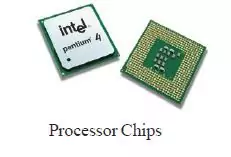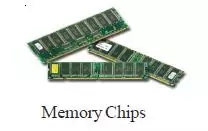System components
Component needed to assemble a basic modern PC system :- Motherboard
- Processor
- Memory (Primary)
- Hard disk
- CD-ROM
- Floppy Drive
- Keyboard
- Mouse
- Monitor
- Power Supply
- Cabinet
Motherboard : motherboard is that the important component of the pc as everything else is connected thereto .
And it controls everything in the system. Motherboard are available in
several different shapes. Motherboard usually contain the following
individual components.
- Processor slot
- Processor voltage regulators
- Motherboard chips
- Level 2 cache
- Memory SIMM or DIMM sockets
- Bus slots
- ROM BIOS
- Clock / CMOS battery
- Super I/O chips
Processor :
Primary Memory :
Primary memory is usually called as RAM(Random Access Memory). It holds all the programs and data the processor is using at a given time. RAM is volatile because its contents are erased when power is switched off. The other sort of system memory is ROM(Read only Memory)which is permanent because it contents aren't erased even when power is transitioned . It is usually wont to load an OS .
Hard disk drive :
CD-ROM drive :
Keyboard :
Mouse :
Monitor :
Power supply :
The power supply supplies power to every single part in the PC. The main function of the facility
supply is to convert the 230 V AC into 3.3 V, 5 V and 12 V DC power
that the system requires for the operations. In addition to supplying
power to run the system, the facility supply also ensures that the system doesn't run unless the facility supplied is sufficient to work the system properly. The power supply completes internal checks and tests before allowing the system to start out . If the tests are successful, the facility supply sends a special signal to the motherboard called Power_Good. If this signal isn't present continuously, the pc doesn't run. Therefore, when the AC voltage dips and therefore the power supply becomes stressed or overheated, the Power_Good signal goes down and forces a system reset or complete shutdown.
Peripheral Devices :
Any external device, which isn't necessary to perform the essential operation of computer, is named as peripherals. they supply additional computing capabilities. For ex : Printers, Modems, Speakers etc.
Modem :
Cabinet :
Peripheral Devices :
Any external device, which isn't necessary to perform the essential operation of computer, is named as peripherals. they supply additional computing capabilities. For ex : Printers, Modems, Speakers etc.
Modem :
Modem (Modulator and Demodulator) is usually wont to send digital data over a telephone line . The sending modem converts digital data into analog data, which may be transmitted over telephone lines, and therefore the receiving modem converts the analog data back to digital form. this is often wont to hook up with Internet.
Modems are available in several capacities -
- 300 bps - 1960s through 1983 approximately
- 1200 bps - Gained popularity in 1984 and 1985
- 2400 bps
- 9600 bps - First appeared in late 1990 and early 1991
- 19.2 kilobits per second (Kbps)
- 28.8 Kbps
- 33.6 Kbps
- 56 Kbps - Became the quality in 1998
- ADSL, with theoretical maximum of up to eight megabits per second (Mbps) - Gained popularity in 1999.
Different types of printers are :
- Laser
- Inkjet
- Dot-Matrix.














0 Comments
I will be there for your help...